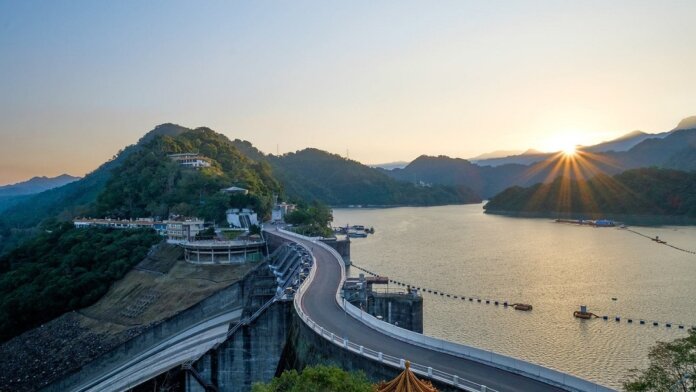Solar power is going to play a major role in combating climate change, but it requires huge amounts of land. Floating solar panels on top of reservoirs could provide up to a third of the world’s electricity without taking up extra space, and also save trillions of gallons of water from evaporating.
So called “floating photovoltaic” systems have a lot going for them. The surface of reservoirs can’t be used for much else, so it’s comparatively cheap real estate, and it also frees up land for other important purposes. And because these bodies of water are designed to service major urban centers, they’re normally close to where the power will be needed, making electricity distribution simpler.
By shielding the water from the sun, floating solar panels can also significantly reduce evaporation, which can be a major concern in the hot dry climates where solar works best. And what evaporation does occur can actually help to cool the panels, which operate more efficiently at lower temperatures and therefore squeeze out extra power.
Just how promising the approach could be had remained unclear, as so far analyses had been limited to individual countries or regions. A new study in Nature Sustainability has now provided a comprehensive assessment of the global potential of floating solar power, finding that it could provide between a fifth and half of the world’s electricity needs while saving 26 trillion gallons of water from evaporating.
The new research was made possible by combining several databases mapping reservoirs around the world. This allowed the researchers to identify a total of 114,555 water bodies with a total area of 556,111 square kilometers (214,716 square miles).
They then used a model developed at the US Department of Energy’s Sandia National Laboratory that can simulate solar panel performance in different climatic conditions. Finally, they used regional hydrology simulations to predict how much the solar panels would reduce evaporation based on local climate data.
In their baseline study, the researchers assumed that solar panels would only cover 30 percent of a reservoir’s surface, or 30 square kilometers (11.6 square miles), depending on which is lower. This was done to take into account the practical difficulties of building larger arrays and also the potential ecological impact of completely covering up the body of water.
Given these limitations, the researchers calculated that the global generating potential for floating solar panels was a massive 9,434 terawatt-hours a year, which is roughly 40 percent of the 22,848 terawatt-hours the world consumes yearly, according to the International Energy Agency’s latest figures.
If the total coverage was limited to a much more reasonable 10 percent, the researchers found floating solar power could still generate as much as 4,356 terawatt-hours a year. And if the largest reservoirs were allowed to have up to 50 square kilometers (19 square miles) of panels then the total capacity rose to 11,012 terawatt-hours, almost half of global electricity needs.
The authors note that this capacity isn’t evenly distributed, and some countries stand to gain more than others. With more than 25,000 reservoirs, the US has the most to gain and could generate 1,911 terawatt-hours a year, almost half its total consumption. China, India, and Brazil could also source a significant amount of their power this way.
But most interestingly, the analysis showed that as many as 6,256 cities could theoretically meet all of their electricity demands with floating solar power. Most have a population below 50,000, but as many as 150 are cities with more than a million people.
It’s important to note that this study was simply assessing the potential of the idea. Floating solar panels have been around for some time, but they are more expensive to deploy than land-based panels, and there are significant concerns about what kind of impact blocking out sunlight could have on reservoir ecosystems.
But given the need to rapidly scale up renewable energy generation, and the scarcity of land for large solar installations, turning our reservoirs into power stations could prove to be a smart idea.



